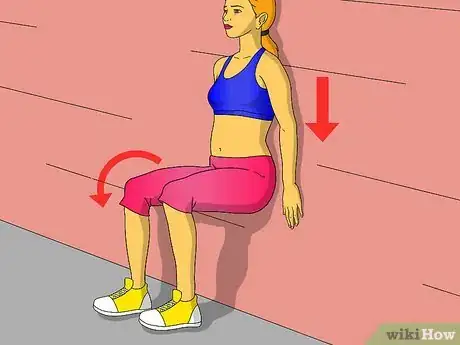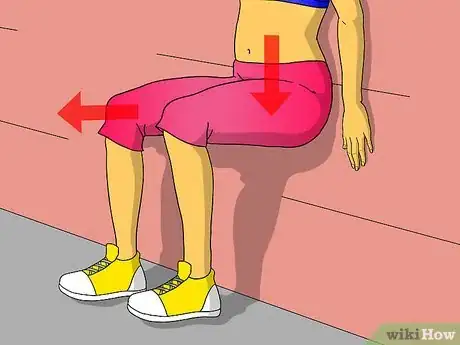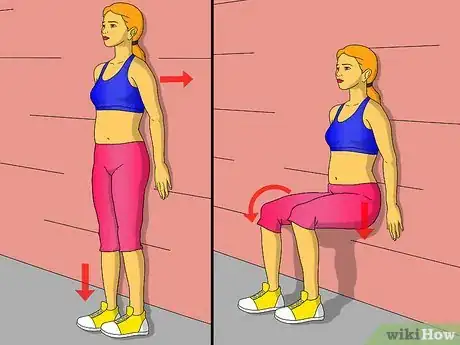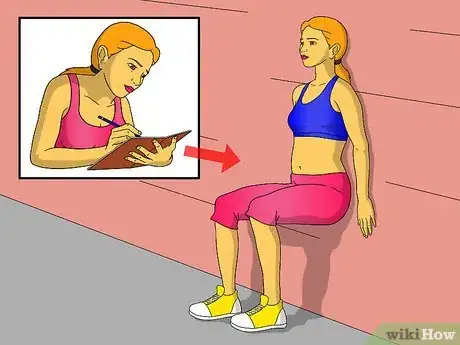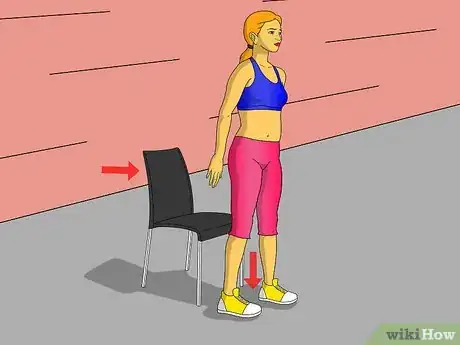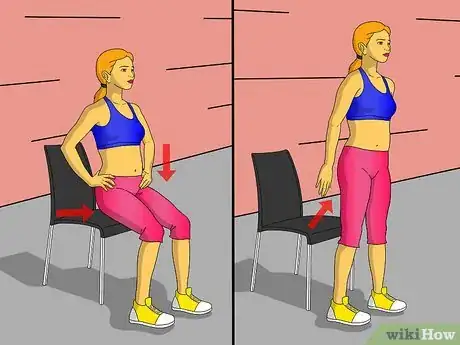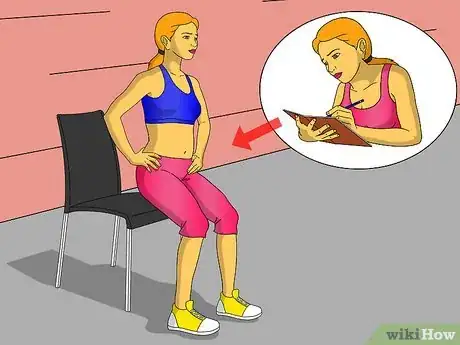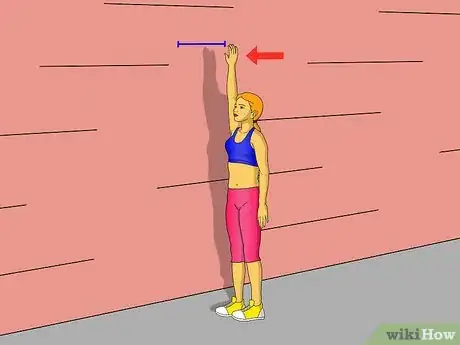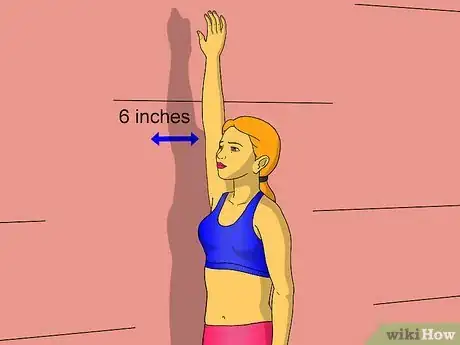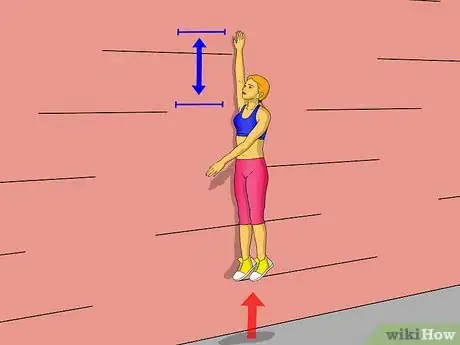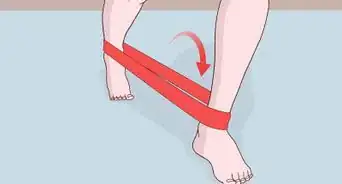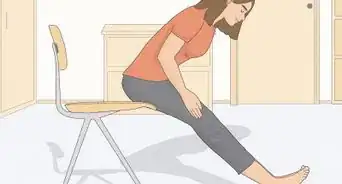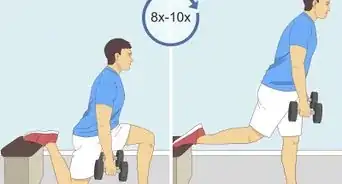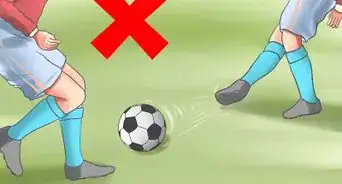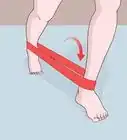wikiHow is a “wiki,” similar to Wikipedia, which means that many of our articles are co-written by multiple authors. To create this article, volunteer authors worked to edit and improve it over time.
This article has been viewed 69,512 times.
Learn more...
There are many reasons why having strong muscles in our lower body is important. They affect many aspects of our lives, including our level of stamina and the quality of our posture. There are several ways to measure lower body strength at home. Keep track of the measurements you take and test yourself often. This will help you keep track of any progress that you make in your exercise routine. Measure your lower body strength prior to starting a workout routine, and then continue to measure every few weeks so that you can record your progress.
Steps
Standard Squat Test
Measuring lower body strength before beginning a workout regimen will allow you to establish a baseline and monitor your progression. This standard squat test will help you gauge you lower-body strength.
-
1Stand with your back flat against a wall. Keep your feet about a foot away from the wall and shoulder width apart.
-
2Bend your knees and slide down the wall until you are in a squat position. Be sure to keep the small of your back pressed firmly against the wall with no arching. Pay careful attention to your knees to make sure they are aligned properly over your toes.[1]Advertisement
-
3Continue to slide into your squat until you are in a comfortable position without feeling any excess strain on the knee joint. Hold this position for a goal of one minute or until you can no longer maintain proper form.
-
4Repeat the test two more times and use the highest reading achieved. Allow yourself adequate rest periods between tests to avoid over-straining the legs and to allow them to recover.
-
5Make a note of the length of time you were able to hold the squat position.[2]
- If you held a squat with proper form for under 20 seconds, your legs are considered relatively weak.
- Remaining in the squat position for 20 to 35 seconds means your leg strength is average.
- If you held for 35 seconds or longer, your leg strength is strong.
Alternative Squat Test
Try an alternative version of the wall squat test, the chair squat. A chair squat will help you determine what your lower body strength is without the support of the wall. Use a chair or bench that has a height that will allow your knees to form a right angle when you are sitting.
-
1Stand in front of a chair with your back facing it and your feet shoulder width apart.
-
2With your hands on your hips, squat down as if you are going to sit in the chair.
-
3Lightly touch the chair and then return to a standing position again.
- Repeat the squats squats until you are fatigued and can no longer do them with proper form.
-
4Make a note of the number of squats you were able to do.
- If you did less than 10 squats, your legs are relatively weak.
- If you performed 10 to 20 squats, your leg strength is average.
- Your legs are strong if you are able to do 20 to 30 squats.
- If you were able to perform over 30 squats, your legs are in excellent shape.
- Recording how many squats you are able to complete will help you to determine how much your lower body strength has increased after working them out. Repeat this test periodically.
Vertical Jump Test
Take a vertical jump test to measure your explosive leg power. You will need a high wall and some room allowing you to jump and land safely.
-
1Determine your standing reach height. Stand with the side of your body facing the wall. Use the hand closest to the wall to reach up as high as you are able to and make note of the height.
-
2Stand approximately 6 inches (15.2 cm) away from the wall. Using both arms and legs to help in projecting the body upward, jump as high as you are able to and touch the wall at the top of the jump. Note the spot where you touched the wall at the maximum height.
-
3Measure the distance between the standing reach height and the maximum jump height based on the distance between the 2 points.
- A distance under 8 inches (20.3 cm) signals poor leg strength.
- If the distance ranges between 8 to 20 inches (20.3 to 50.8 cm), your leg strength is average.
- Anything over 20 inches (50.8 cm) means your leg strength is strong.
Warnings
- Do not do these exercises if you have knee problems. It is very important to not allow your knees to extend beyond your toes while in a squat.⧼thumbs_response⧽
References
- ↑ https://www.cbi.ca/documents/12741/633624/19-Trunk+and+Lower+Extremity+Muscle+Endurance+Normative+Data+for+Adults.+Journal+of+Rehabilitation+Outcomes+Measurement+1998.pdf/4a9c30ea-0314-40ff-87bb-6895f7e22f6c
- ↑ https://www.cbi.ca/documents/12741/633624/19-Trunk+and+Lower+Extremity+Muscle+Endurance+Normative+Data+for+Adults.+Journal+of+Rehabilitation+Outcomes+Measurement+1998.pdf/4a9c30ea-0314-40ff-87bb-6895f7e22f6c
- http://www.antiaging-wellness.com/Pages/Wellness/Body/Tests/lower_strength.php
- http://www.ncbi.nlm.nih.gov/pubmed/10380242

